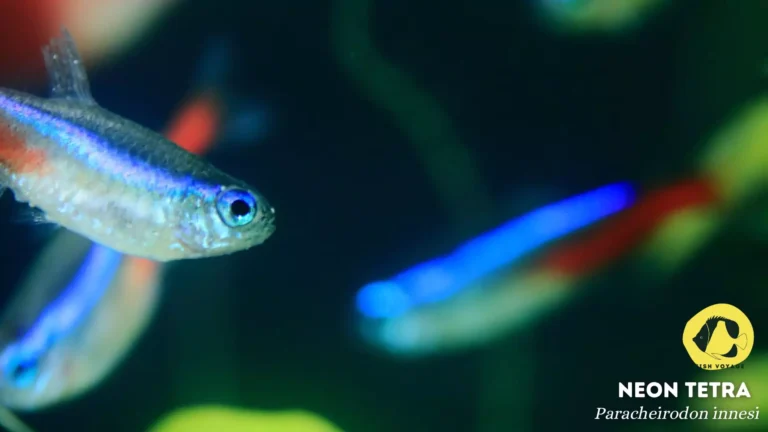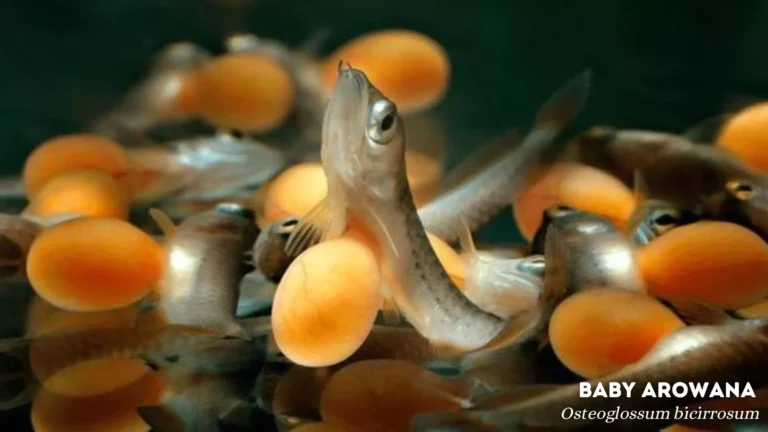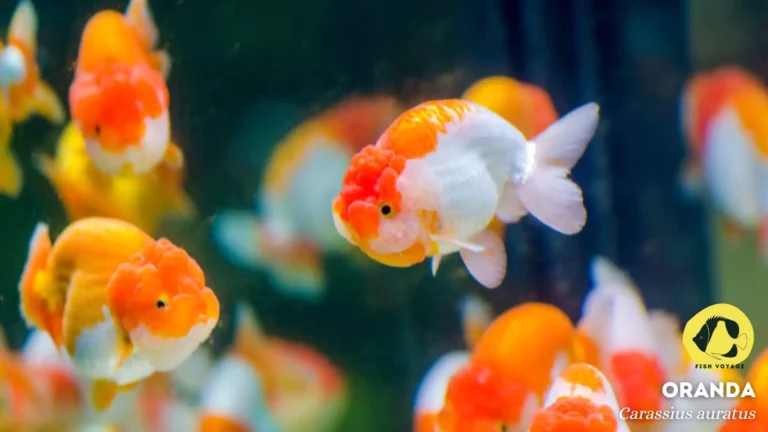Top 5 Albino Cory Catfish Tank Mates

Welcome to our comprehensive guide on Albino Cory Catfish tank mates. In the aquatic realm, Albino Cory Catfish stand out with their striking appearance and unique behaviors. These charming, albino variants of the Corydoras genus add a touch of elegance to any aquarium with their pale coloration and playful antics.
Choosing the right companions for your Albino Cory Catfish is crucial for fostering a harmonious aquatic environment. The importance of compatible tank mates cannot be overstated; it not only enhances the well-being of your finned friends but also contributes to a visually stunning and thriving aquarium.
This blog post aims to shed light on the characteristics of Albino Cory Catfish, emphasizing the key factors to consider when selecting suitable tank mates. From water parameters to temperament matching, we delve into the intricacies of creating a community that not only coexists peacefully but flourishes together. Whether you’re a seasoned aquarist or a beginner navigating the fascinating world of fishkeeping, our guide provides valuable insights and recommendations for a successful and enjoyable aquarium experience.
Join us as we explore the enchanting realm of Albino Cory Catfish and discover the perfect companions to complement their unique charm. Let’s embark on a journey to create a vibrant and thriving aquatic community that showcases the beauty and diversity of the underwater world.
Characteristics of Albino Cory Catfish
Size and Appearance
- Distinctive Albino Coloration: Albino Cory Catfish boast a captivating appearance with their translucent bodies and vibrant red or pink eyes. Their unique albino coloration sets them apart, adding a touch of elegance to any aquarium.
- Compact Size: Typically reaching a length of 2 to 2.5 inches (5 to 6.5 cm), Albino Cory Catfish are well-suited for community tanks of various sizes. Their compact size makes them an excellent choice for both novice and experienced aquarists.
Behavior and Temperament
- Social Nature: Albino Cory Catfish are inherently social creatures, thriving in the company of their kind. Their schooling behavior not only enhances their well-being but also creates a visually appealing dynamic within the aquarium.
- Bottom-Dwelling Habits: Known for their bottom-dwelling tendencies, these catfish spend much of their time exploring and foraging along the substrate. Their charming habit of scavenging for food particles adds an engaging element to the aquarium.
- Non-Aggressive Demeanor: Albino Cory Catfish are renowned for their peaceful temperament. Their calm nature makes them an ideal addition to community tanks, where they coexist harmoniously with a variety of tank mates.
Unique Care Considerations for Albino Cory Catfish
- Soft Substrate Preference: Due to their bottom-dwelling behavior, provide a soft substrate in the aquarium to prevent injuries to their delicate barbels. Fine sand or smooth gravel is recommended to mimic their natural habitat.
- Adequate Hiding Places: Albino Cory Catfish appreciate hiding spots, such as caves or dense vegetation, to retreat to when they feel the need for security. Incorporating these features ensures a stress-free environment.
- Balanced Diet: A well-rounded diet consisting of high-quality sinking pellets, live or frozen foods, and occasional vegetable-based supplements is essential for their overall health. Ensure they receive a varied and nutritionally complete diet.
By understanding the size, behavior, and unique care requirements of Albino Cory Catfish, aquarists can provide an environment that caters to their specific needs, fostering a thriving and visually captivating aquatic community.
Ideal Tank Conditions
Water Parameters
- Temperature Stability: Albino Cory Catfish thrive in temperatures ranging from 72°F to 78°F (22°C to 26°C). Maintaining a stable temperature within this range is crucial to their overall well-being and vitality.
- pH Levels: Aim for a slightly acidic to neutral pH range of 6.5 to 7.5. Consistent pH levels within this range help replicate the natural conditions of their native habitats, promoting optimal health.
- Ammonia and Nitrate Levels: Regularly monitor and maintain low levels of ammonia and nitrate in the aquarium. Albino Cory Catfish are sensitive to poor water quality, and pristine conditions are essential for their health.
Tank Setup and Decoration Tips
- Soft Substrate Choice: Provide a soft substrate, such as fine sand or smooth gravel, to protect the sensitive barbels of Albino Cory Catfish. This substrate also mimics their natural environment and encourages natural foraging behavior.
- Adequate Hiding Spaces: Incorporate hiding spots like caves, driftwood, or dense vegetation to offer security and retreat options. Albino Cory Catfish appreciate these features, contributing to a stress-free environment.
- Moderate Water Flow: Aim for a moderate water flow within the aquarium. While Albino Cory Catfish appreciate some current, excessive water movement may stress them. Strategically place decorations to create areas with lower flow.
- Low-Light Conditions: Albino Cory Catfish prefer subdued lighting. Consider using floating plants or adjustable aquarium lights to create shaded areas, allowing these catfish to feel comfortable and secure.
By meticulously maintaining water parameters and creating a well-thought-out tank setup, aquarists can ensure the optimal living conditions for Albino Cory Catfish. These considerations contribute to a thriving and harmonious aquatic environment that enhances the health and vibrancy of these captivating catfish.
Selecting Albino Cory Catfish Tank Mates
Compatibility Factors
- Similar Water Requirements: Albino Cory Catfish thrive in specific water conditions, so selecting tank mates with similar requirements is crucial. Opt for species that share the same temperature, pH, and water hardness preferences to create a cohesive and thriving aquatic community.
- Temperament Matching: Considering the peaceful nature of Albino Cory Catfish, choose tank mates with compatible temperaments. Avoid aggressive or territorial species that may harass or intimidate these gentle catfish. Opting for community-minded fish promotes a harmonious coexistence.
- Size Considerations: Size compatibility is essential to prevent potential conflicts. Select tank mates that are of similar size to the Albino Cory Catfish to avoid situations where larger or more boisterous fish may inadvertently cause stress or harm.
Avoiding Aggressive Species
Albino Cory Catfish’s docile nature makes them vulnerable to aggressive tank mates. Avoid species known for territorial behavior, fin-nipping, or aggression, as this can lead to stress and potential injuries. Research the temperament of potential tank mates to ensure a peaceful environment.
Community-Friendly Fish Options
- Tetras: Small and schooling tetras, such as Neon Tetras or Harlequin Rasboras, can be excellent companions. Their lively nature complements the Albino Cory Catfish, creating an active and engaging aquarium.
- Livebearers: Peaceful livebearers like Guppies or Platies are suitable tank mates. Their vibrant colors add visual appeal, and their non-aggressive behavior makes them compatible with Albino Cory Catfish.
- Dwarf Gouramis: Dwarf Gouramis are relatively peaceful labyrinth fish that can coexist harmoniously. Ensure proper space and hiding spots to prevent potential conflicts.
- Non-Aggressive Bottom Dwellers: Consider other non-aggressive bottom-dwelling species, such as Kuhli Loaches or Otocinclus Catfish, to share the lower levels of the aquarium without competition or aggression.
By carefully considering compatibility factors, avoiding aggressive species, and selecting community-friendly fish options, aquarists can create a balanced and thriving aquarium where Albino Cory Catfish and their tank mates coexist in harmony.
Top 5 Recommended Tank Mates
Neon Tetras (Paracheirodon innesi)
Neon Tetras are small, schooling fish that share similar water parameter preferences with Albino Cory Catfish. Their peaceful nature and vibrant colors make them ideal companions, creating a visually appealing and dynamic aquatic community.

Harlequin Rasboras (Trigonostigma heteromorpha)
Harlequin Rasboras are known for their calm demeanor and schooling behavior, making them excellent tank mates for Albino Cory Catfish. Their compact size and striking colors add interest to the mid-level of the aquarium, enhancing the overall aesthetic.

Bristlenose Plecos (Ancistrus cirrhosus)
Reason for Compatibility Bristlenose Plecos are peaceful bottom-dwelling fish that complement Albino Cory Catfish’s habitat. With their algae-eating habits, they contribute to the aquarium’s cleanliness while avoiding competition for the same food sources.
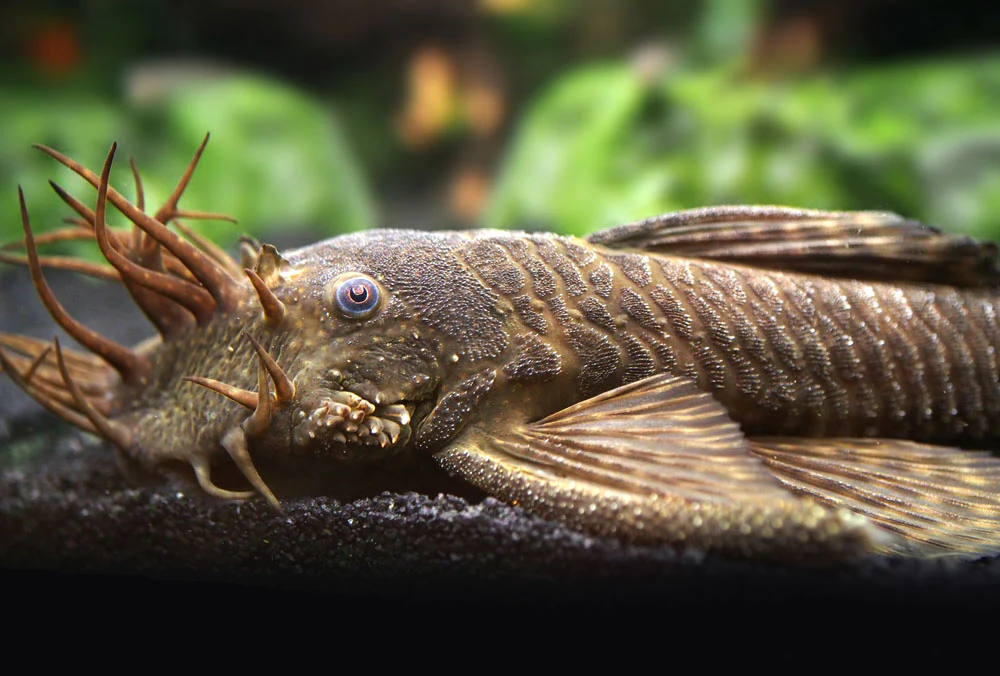
Dwarf Gouramis (Trichogaster lalius)
Dwarf Gouramis are labyrinth fish known for their vibrant colors and calm demeanor. Their mid-level swimming behavior and compatibility with Albino Cory Catfish make them suitable companions, provided there is adequate space and hiding spots.
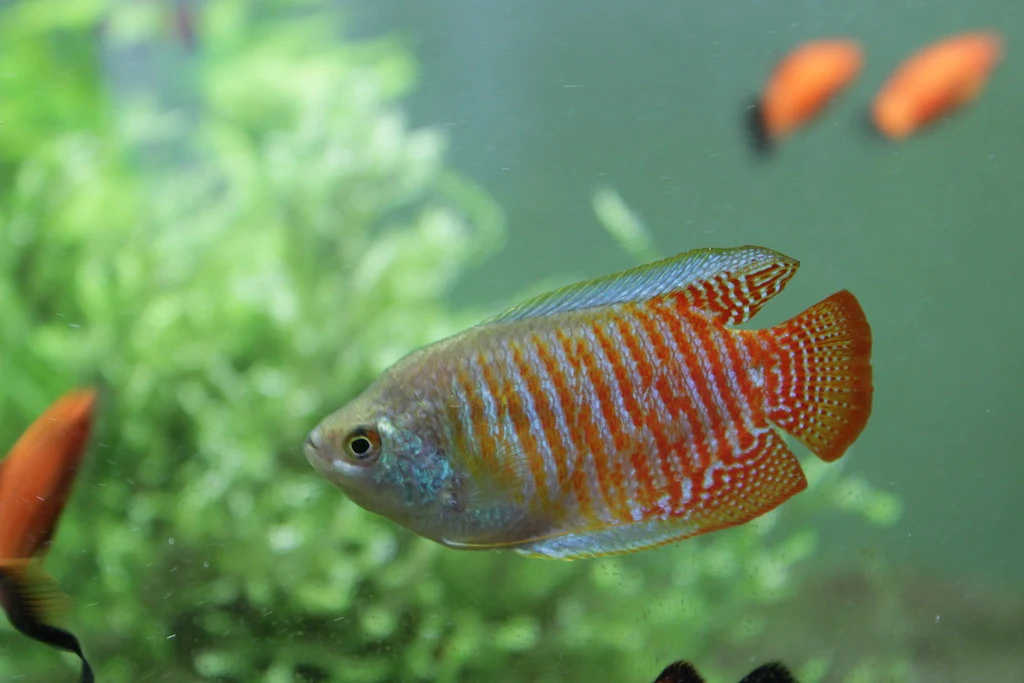
Otocinclus Catfish (Otocinclus affinis)
Otocinclus Catfish, also known as “Otos,” are peaceful bottom dwellers that share a similar diet with Albino Cory Catfish. Their small size and algae-grazing habits contribute to a well-maintained aquarium without disrupting the harmony of the tank.

These top 5 recommended tank mates are chosen for their compatibility with Albino Cory Catfish in terms of temperament, size, and water parameter preferences. When creating a community aquarium, incorporating these species ensures a balanced and visually captivating environment where each fish contributes to the overall well-being of the aquatic community.
Top 5 Incompatible Tank Mates
Aggressive Cichlids (e.g., Oscar Fish)
Aggressive cichlids, such as Oscar Fish, are territorial and may exhibit hostile behavior towards Albino Cory Catfish. The size disparity and the cichlids’ aggressive nature can lead to stress, injury, or even predation.
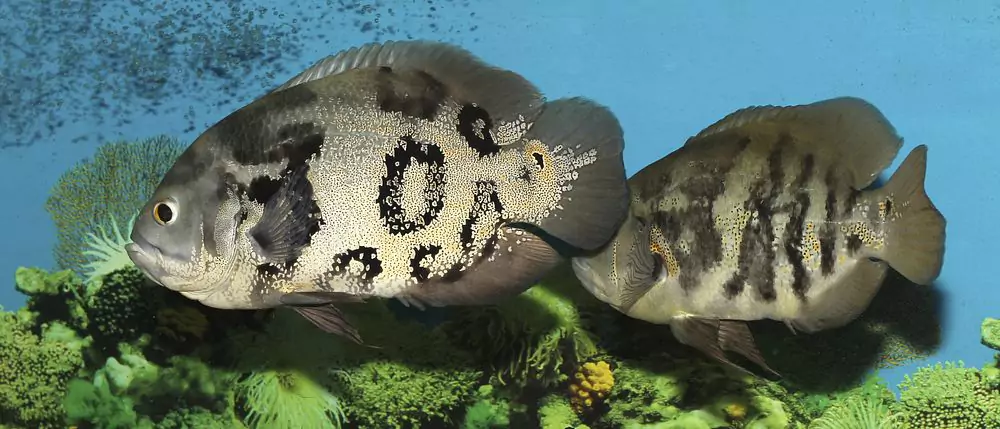
Nippy or Fin-Nipping Fish (e.g., Tiger Barbs)
Species known for fin-nipping, like Tiger Barbs, pose a threat to Albino Cory Catfish’s delicate fins. The nipping behavior can cause stress and physical harm, disrupting the peaceful environment required for the well-being of the catfish.
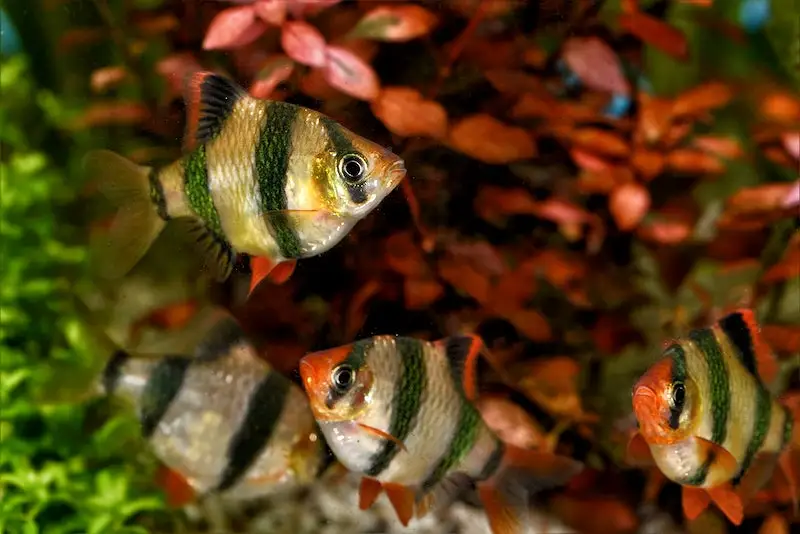
Large and Boisterous Species (e.g., Goldfish)
Large and active species, such as Goldfish, can inadvertently cause stress to Albino Cory Catfish due to their size and swimming behavior. Additionally, Goldfish have different temperature preferences, making them unsuitable tank mates.
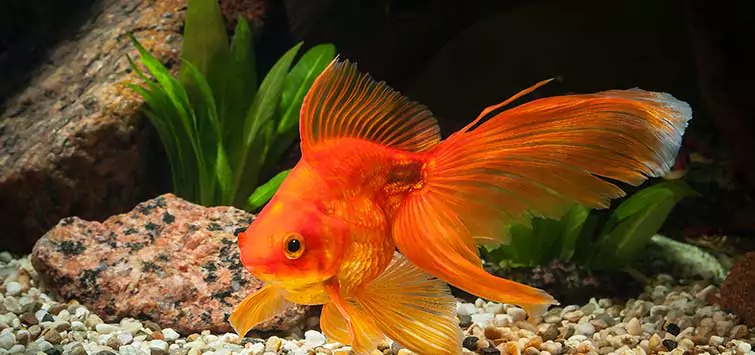
Predatory Fish (e.g., Arowana)
Predatory fish, like Arowana, may view Albino Cory Catfish as potential prey. The size difference and predatory instincts of such species can lead to aggressive behavior, posing a significant threat to the catfish.
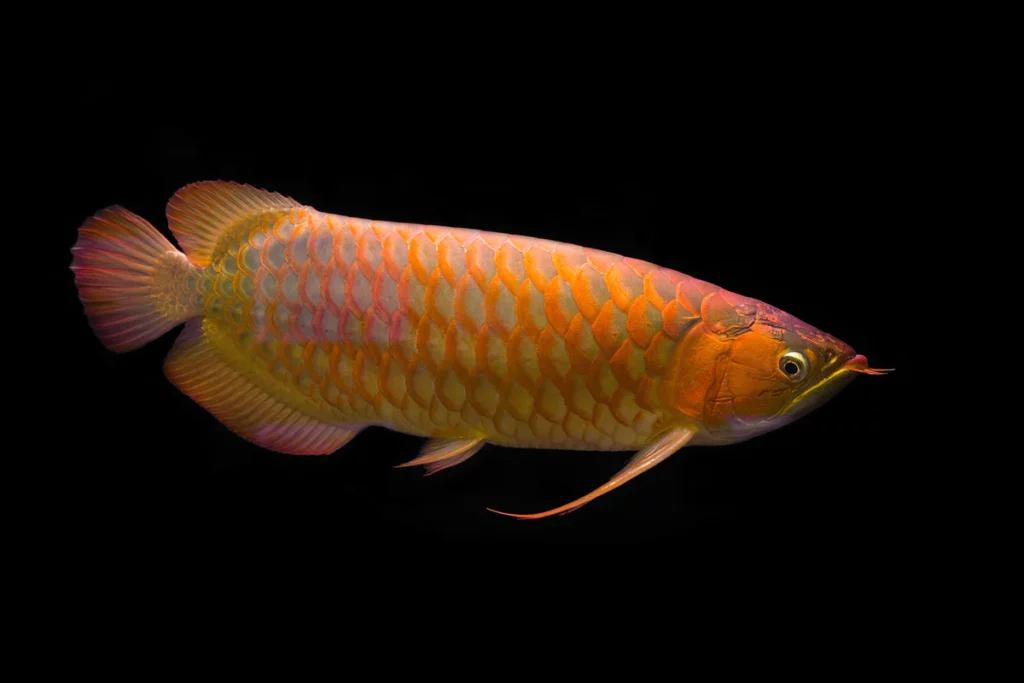
Territorial Catfish (e.g., Redtail Catfish)
Territorial catfish, especially larger species like Redtail Catfish, are known to be territorial and aggressive towards other bottom-dwelling fish. Albino Cory Catfish, being more peaceful, may face intimidation, stress, or aggression in the presence of such tank mates.

These top 5 incompatible tank mates are selected based on the potential for aggression, predatory behavior, or mismatches in size and temperament. Ensuring compatibility in the aquarium helps maintain a harmonious and stress-free environment for Albino Cory Catfish and their tank mates.
Potential Challenges and Solutions
Aggression Issues
- Identification of Aggressive Behavior: Be vigilant for signs of aggression, such as fin-nipping or chasing, especially during feeding times or breeding seasons.
- Separation and Observation: If aggression is observed, consider temporarily separating the aggressive fish from the community tank. This allows for closer observation and prevents potential harm to Albino Cory Catfish.
- Reevaluate Tank Mates: Assess the compatibility of tank mates and, if necessary, reevaluate and replace aggressive species with more suitable companions to create a harmonious environment.
Dietary Concerns
- Varied and Balanced Diet: Ensure Albino Cory Catfish receive a diverse diet consisting of high-quality sinking pellets, live or frozen foods, and occasional vegetable-based supplements.
- Observation during Feeding: Monitor feeding sessions to ensure Albino Cory Catfish are receiving their fair share of food. In a community tank, slower feeders may require additional attention during mealtime.
- Avoid Overfeeding: Overfeeding can lead to water quality issues and obesity in fish. Feed in moderation, and remove any uneaten food promptly to maintain optimal water conditions.
Disease Prevention
- Quarantine New Additions: Quarantine newly acquired fish before introducing them to the main tank. This helps prevent the spread of potential diseases and ensures the health of existing tank inhabitants.
- Regular Water Quality Checks: Maintain excellent water quality by regularly testing and monitoring parameters such as pH, ammonia, nitrite, and nitrate levels. Clean water is crucial for preventing stress-related diseases.
- Isolate and Treat Sick Fish: If a fish shows signs of illness, promptly isolate and treat it in a separate quarantine tank to prevent the spread of disease to other tank mates.
Addressing potential challenges in a community aquarium, such as aggression, dietary concerns, and disease prevention, requires a proactive and attentive approach. By implementing these solutions, aquarists can create an environment that fosters the well-being of Albino Cory Catfish and their tank mates, ensuring a thriving and disease-free aquatic community.
Tips for Introducing New Tank Mates
Quarantine Procedures
- Isolate New Additions: Before introducing new fish to the main tank, quarantine them in a separate tank for a recommended period. This helps identify and address any potential health issues without affecting the established aquarium community.
- Observation Period: During quarantine, closely monitor the new arrivals for signs of illness, abnormal behavior, or stress. Address any issues promptly to prevent the spread of diseases to existing tank mates.
- Medication if Necessary: If signs of disease are detected, treat the quarantined fish with appropriate medications before considering their introduction to the main tank.
Monitoring Behavior
- Visual Observation: Observe the behavior of both existing and new tank mates before introducing them. Look for any signs of aggression, stress, or compatibility issues.
- Compatibility Testing: Before releasing new fish into the main tank, perform a visual compatibility test by placing them in a separate container within the aquarium. Monitor reactions and interactions with existing inhabitants.
- Introduction During Feeding: An effective way to introduce new tank mates is during feeding time. This distraction can help reduce territorial behaviors and create a positive association with the presence of new fish.
Gradual Introduction Techniques
- Floating Container Method: Place the new fish in a floating container within the aquarium. This allows existing tank mates to acclimate to the newcomers’ presence while preventing direct contact.
- Rearrange Tank Decor: Before introducing new fish, rearrange the aquarium décor. This disrupts established territories, reducing the likelihood of aggressive behavior and creating a more neutral environment.
- Partial Tank Water Mixing: Gradually mix small amounts of water from the quarantine tank with the main tank water over several days. This helps acclimate new fish to the existing water conditions, minimizing stress during the introduction.
Introducing new tank mates to Albino Cory Catfish requires careful planning and consideration. By following these tips, aquarists can minimize stress, monitor behavior effectively, and ensure a smooth integration process. These practices contribute to a well-balanced and thriving community aquarium, promoting the health and happiness of all inhabitants.
Conclusion
Recap of Key Points
In conclusion, creating a harmonious aquarium environment for Albino Cory Catfish involves careful consideration of various factors. From understanding the unique characteristics of these captivating catfish to selecting compatible tank mates and addressing potential challenges, a thoughtful approach is essential. Key points include ensuring similar water parameters, choosing peaceful community fish, and providing suitable tank conditions to promote the well-being of Albino Cory Catfish and their companions.
Encouragement for Responsible Fish keeping
Responsible fish keeping goes beyond the aesthetics of a beautiful aquarium. It involves a commitment to the health and happiness of the aquatic inhabitants. As stewards of these underwater ecosystems, it is our responsibility to provide a safe and enriching environment for Albino Cory Catfish and their tank mates. Regular monitoring, proper care, and a dedication to learning about the unique needs of each species contribute to a fulfilling and sustainable fish keeping experience.
Call-to-Action for Reader Engagement
We invite you to share your experiences and insights into creating thriving aquarium communities. What tank mates have you found to be particularly compatible with Albino Cory Catfish? Are there specific challenges you’ve encountered, and how did you overcome them? Engage with our community by leaving your thoughts in the comments below. Your experiences can serve as valuable resources for fellow aquarists, fostering a collaborative space for knowledge-sharing and continuous improvement in the world of fishkeeping.
As you embark on your journey of fishkeeping or continue to refine your skills, remember that each aquarium is a unique microcosm deserving of our attention and care. Thank you for joining us on this exploration of Albino Cory Catfish tank mates, and we look forward to building a community that celebrates the wonders of underwater life.
Happy fishkeeping!
Additional Resources
Links to Books for Further Reading
- Aquarium Catfish by Victoria Vet: A comprehensive guide that covers various catfish species, including detailed insights into the care and keeping of Albino Cory Catfish.
- Corydoras Catfish Care Guide by Sheila Hunt: Authored by an expert in the field, this book provides valuable information specific to the care and breeding of Corydoras catfish, offering practical tips for enthusiasts.
- Encyclopedia of Exotic Tropical Fishes by Glen S. Axelrod: An extensive resource covering a wide range of freshwater fish species, including Albino Cory Catfish, with information on habitat, behavior, and aquarium maintenance.
Recommended Products for Albino Cory Catfish
- API Tropical Mini Pellets: Ensure a balanced diet for Albino Cory Catfish with high-quality sinking pellets. Look for products rich in essential nutrients to support their health and vitality.
- AquaNatural Sugar White Sand Substrate: Explore a variety of soft substrates, such as fine sand or smooth gravel, to create a comfortable and safe environment for Albino Cory Catfish. Choose options that mimic their natural habitat and promote natural foraging behaviors.
- majoywoo Natural Large Coral Driftwood: Enhance your aquarium with decorations that provide hiding spots for Albino Cory Catfish. Consider caves, driftwood, or dense vegetation to create secure spaces, reducing stress and promoting natural behavior.
- API Freshwater Testing Kit: Invest in reliable water testing kits to monitor and maintain optimal water parameters. Regular testing is crucial for ensuring a healthy and stable environment for Albino Cory Catfish and their tank mates.
These recommended resources and products are essential for the well-being of Albino Cory Catfish and contribute to the overall success of your aquarium. Explore these options to enhance your fishkeeping experience and provide the best possible care for your aquatic companions.
Frequently Asked Questions (FAQs)
1. What are the best tank mates for Albino Cory Catfish?
The ideal tank mates for Albino Cory Catfish are peaceful community fish that share similar water parameters. Tetras, Gouramis, and bottom-dwelling species like Kuhli Loaches are often recommended for a harmonious aquarium community.
2. Can Albino Cory Catfish coexist with aggressive fish?
It is not advisable to house Albino Cory Catfish with aggressive species like Oscars or Tiger Barbs. The docile nature of Cory Catfish makes them vulnerable to bullying, which can lead to stress and potential health issues.
3. How should I introduce new tank mates to Albino Cory Catfish?
When introducing new tank mates, follow a gradual process. Quarantine new fish, monitor behavior, and consider techniques such as the floating container method or rearranging tank decor to ease the introduction and minimize stress.
4. Do Albino Cory Catfish need hiding places in the aquarium?
Yes, Albino Cory Catfish appreciate hiding places such as caves or dense vegetation. Providing suitable hiding spots is essential for their security and helps reduce stress, contributing to a healthier and more contented environment.
5. What are the signs of aggression or compatibility issues in Albino Cory Catfish tank mates?
Signs of aggression include fin-nipping, chasing, or territorial behavior. Compatibility issues may manifest as stress, changes in behavior, or visible signs of distress in Albino Cory Catfish. Regular monitoring and observation are crucial to identifying and addressing such issues promptly.



